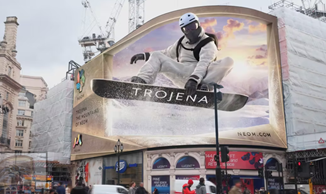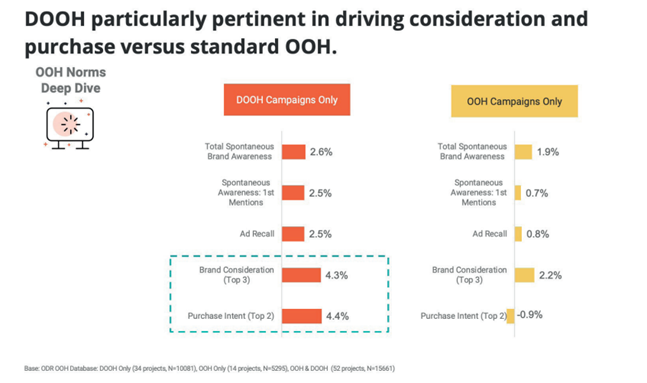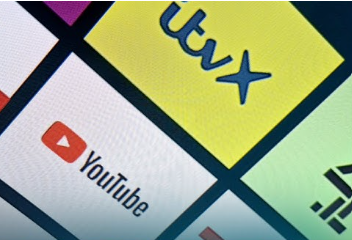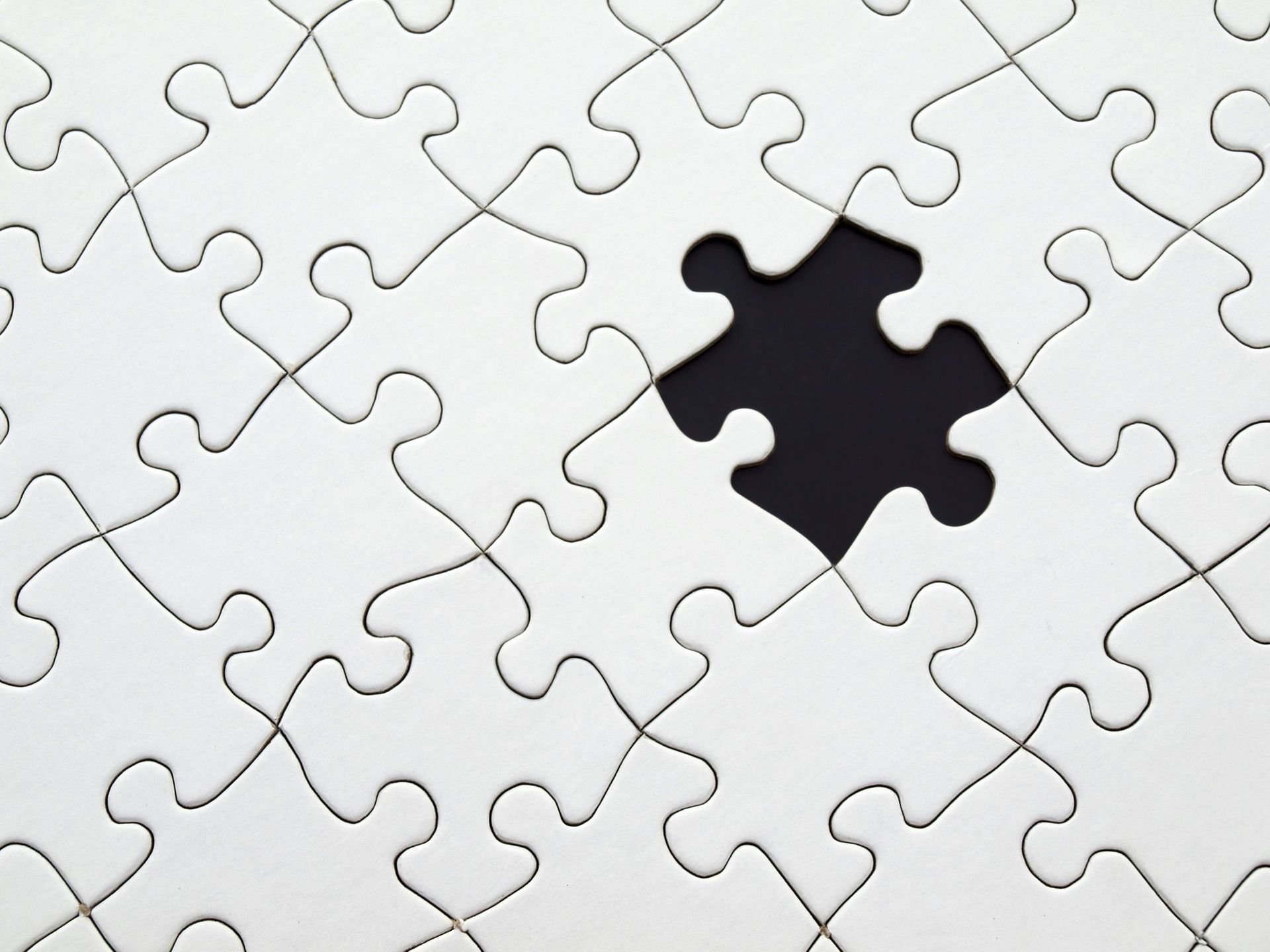Digital OOH boosts ROI and improves lower funnel brand metrics
Growth for Out of Home post-pandemic is being driven by investment into digital sites.
In fact, in 2022, digital sites account for 36% of all transport formats and 23% of all roadside and it is increasing by the day.
In comparison to static formats, DOOH allows for targeted reach and optimisation against relevant moments with relevant content which is driving better results for clients. Static OOH still has an important role of course; it’s unwise to assume that the limited inventory available on digital panels can compete with the high reach offered by the addition of static sites. A bit like linear TV and BVO … the trick is to achieve a balance designed to maximise the key campaign metrics.
There’s plenty of evidence to support how including OOH in campaign plans, and DOOH in particular, works well with other media types to achieve key KPI’s – also remember just because it has the word “digital” in it doesn’t mean it naturally will align with the same strategy as your social and PPC. Digital OOH should be seen as part of an holistic OOH campaign, and work alongside the most complimentary media types for the job.
MESH research has revealed the impact of combining media channels to improve brand consideration. The results show that combining Out of Home with TV delivers the strongest increase in brand consideration, achieving a 43% uplift.
OOH can also drive uplifts in online actions. A recent Posterscope study found that consumers who see Out Of Home advertising (in any format) are 63% more likely to take brand action online. This was from analysis of more than 50 OOH campaigns over the last 5 years.
For me, the excitement of DOOH is the innovation and sheer eye-catchability (that’s definitely a word…) it can bring to a campaign. Not just the really innovative stuff like the 3D Deep Screen format which is amazing, but the stand-out capability of things like InLink or digital kiosks formats in your local high street.

Finally, and to get back to the headline point specifically about digital OOH driving ROI, a study by OnDevice Research, showed that DOOH is shown to drive 4.4% more purchase intent vs a solus standard OOH campaign – combine that with the reach achievable with static OOH and you’ve got yourself a winner.






